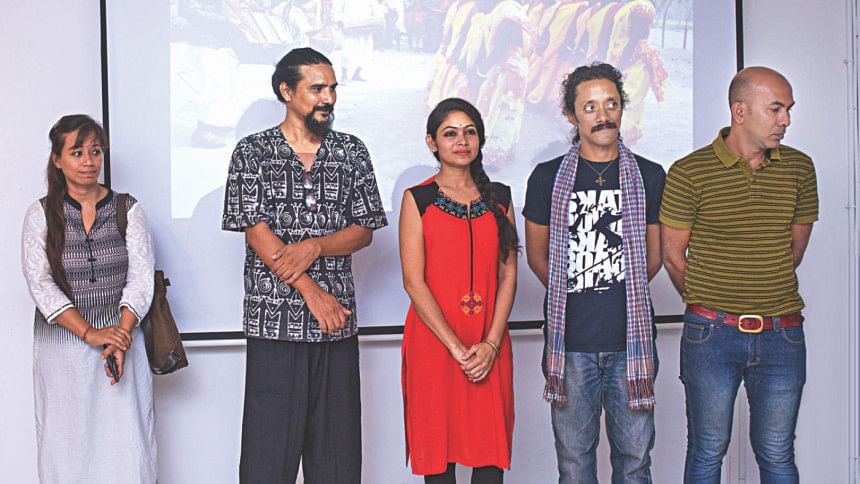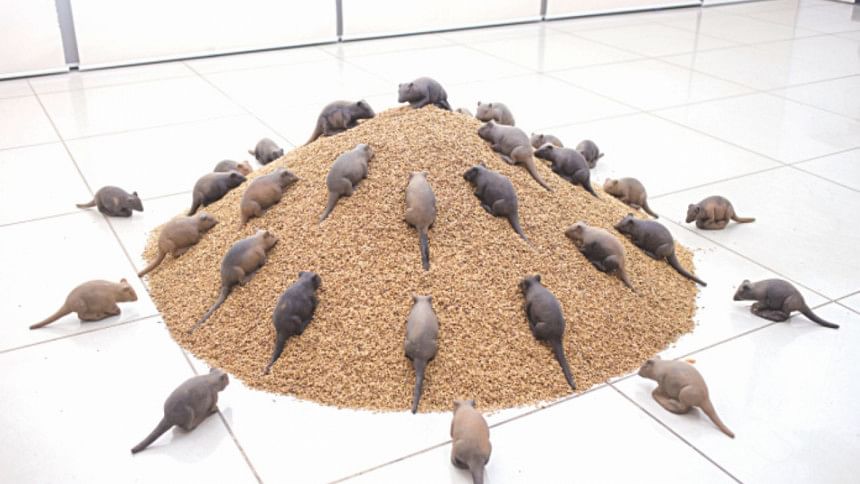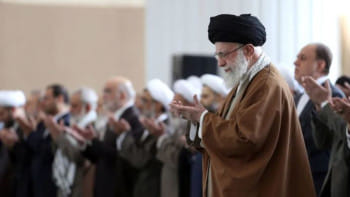GIDREE BAWLEE EMPOWERMENT THROUGH ART

A few days ago if you entered the corner-most exhibition space at the EMK Center, no one would blame you if you thought it was an exhibition of rural artifacts. With unique displays such as an installation work where a mound of rice was assaulted, all over, by a pack of terracotta rats and anotherfloor-mat laden with organic dyes and ethnic tools of art, it was, in fact, that but, also, much, much more.
Commencing on February 19, 2016, Thursday, the event was a showcase of works produced at the 'In-Site – Environmental Art Workshop', held from February 12-19, 2016 in Mollani, Thakurgaon under the aegis of the unique Gidree Bawlee project (http://gidreebawlee.org). The term 'environmental art' often encompasses 'ecological' concerns but is not specific to them. It primarily celebrates an artist's connection with nature using natural materials. However, most importantly it looks anew at art, following the theories of Alfred Gell, as a complex system of intentionality, where artists produce art objects to effect changes in the world, including, but not restricted to, changes in the aesthetic perceptions of art audiences.

Anthropology of art focuses on the social context of art production, circulation, and reception, not on the evaluation of particular works. Here Art is defined by the distinctive function it plays in advancing social relationships constructed through agency. Agency, on the other hand, is the capacity of individuals to act independently and to make their own free choices. Projects like the Gidree Bawlee hope to strengthen individuals against age-old institutions of the structured world we live in. The structure versus agency debate may be understood as an issue of socialization against autonomy in determining whether an individual acts as a free agent or in a manner dictated by social structure.
Gidree Bawlee Foundation of Arts
started its journey in 2001 as a non-profit and multidisciplinary organization. Creating scopes for cultural and artistic exchange between artists and communities through collaborative approaches is Gidree Bawlee's motto. Since its initiation, the organization has arranged several collaborative art workshops with contemporary artists and the local indigenous communities in Thakurgaon.
The brainchild of a group of urban artistes Kamruzzaman Shadhin, Neloy I Hossain et al, every year for the last 13 years, the organization has successfully helped the local indigenous Shantal community organize their annual event, 'Shidhu-Kanu Day' on June 30. The Shantal community commemorates this day with various cultural programs including traditional games, dancing, theatre performance etc. Gidree Bawlee has been actively involved in every way with these activities to encourage them to preserve their culture.
Speaking, on mobile, to Amal Tudu, a young Shantal college student from Mollani, it is palpably apparent that the project has empowered the community. As per Amal, 'The Gidree Bawlee project has given us the inspiration to look at our history and be proud of who we are as a people. It has also shown us ways in which we can preserve our traditional techniques of building construction, crafts and enrich our cultural practices.'
The exhibition at the EMK also featured photographs and video displays, which showed moving images of the project coming to life through collaborative art projects and the building of a Cultural Center for which it's main sponsor the Kazi Farms need to be congratulated. This is cultural intervention for empowerment of the community, at its best.
The only regret was that representatives of the Shantal community were visibly missing from the high profile event in Dhaka. It is to be hoped that empowerment will also bring recognition.
The writer is a Dancer,
Cultural Activist and Researcher.

 For all latest news, follow The Daily Star's Google News channel.
For all latest news, follow The Daily Star's Google News channel. 



Comments